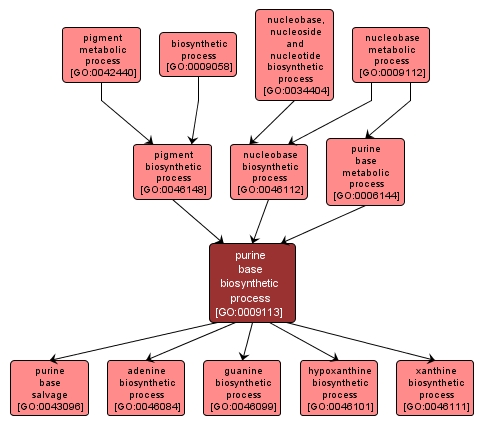GO TERM SUMMARY
|
| Name: |
purine base biosynthetic process |
| Acc: |
GO:0009113 |
| Aspect: |
Biological Process |
| Desc: |
The chemical reactions and pathways resulting in the formation of purine bases, one of the two classes of nitrogen-containing ring compounds found in DNA and RNA, which include adenine and guanine. |
Synonyms:
- purine base anabolism
- purine base formation
- purine base synthesis
- purine base biosynthesis
|
|

|
INTERACTIVE GO GRAPH
|














